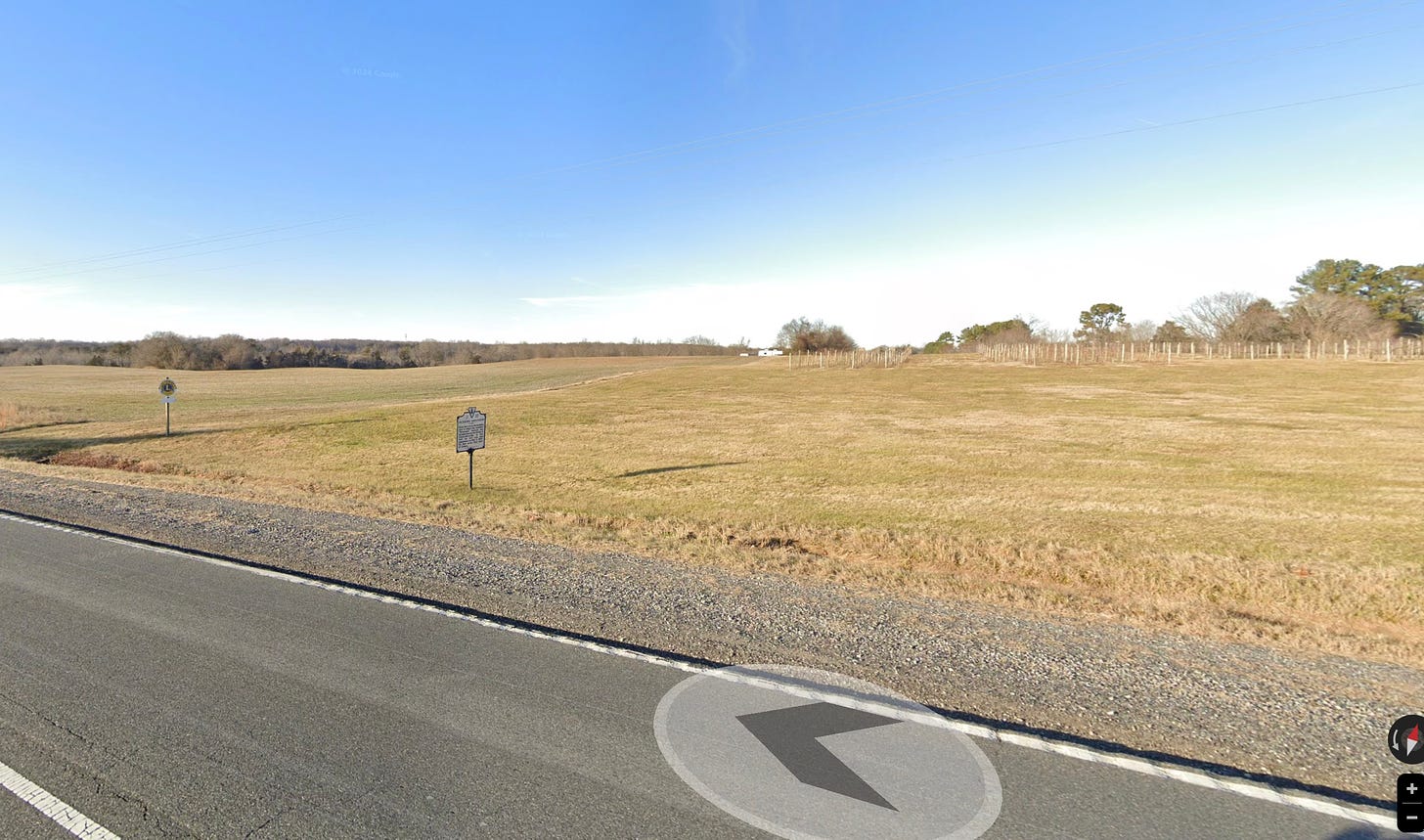Driving through the Virginia countryside we saw anything but battlefields.
Farms, wineries, the occasional mom-and-pop convenience store…nothing that hinted at the chaos and bloodshed from 160 years ago.
We knew it was there.
We were looking for the historic marker that shouldn’t be too far from Chancellorsville, where Stonewall Jackson supposedly had his arm amputated. Amputated then apparently whisked away for a “Christian burial”.
Why would someone give a “Christian burial” to an arm?
“SLOW DOWN!” Jenn exclaimed.
I did what I could with the cars behind me…but it appeared that I had missed whatever mark she was hoping to hit.
Country roads aren’t always conducive to quick turnarounds so it took another 5 minutes…but we looped back around and found it.
Right there next to ‘Wilderness Run Vineyard’.
I should have figured…the vineyard was most likely named after the Battle of Wilderness in 1864.
General Thomas J. "Stonewall" Jackson, a Confederate military leader known for his tactical brilliance, lost his left arm after the Battle of Chancellorsville in May 1863.
The incident occurred on May 2, 1863, after Jackson had led his troops to a decisive victory. While scouting ahead of his lines at night, he was mistakenly shot by his own soldiers in a case of friendly fire. The bullet shattered the bone below his left shoulder, and amputation was the only option to save his life.
The amputation was performed by Dr. Hunter McGuire, a prominent Confederate surgeon, who removed Jackson's arm near the shoulder. Despite the successful surgery, Jackson succumbed to pneumonia a week later on May 10, 1863.
His loss was a significant blow to the Confederacy, and he is remembered as one of the most effective generals of the American Civil War.
Happy that we found the sight of the amputation…our journey then ventured to where the arm was buried.
Yup…they BURIED his arm 7 days before him.
That was much easier to find as Ellwood Manor eventually became a small National Park and the marker to Stonewall Jackson’s left arm is there.
There are all sorts of urban legends of marines digging it back up, standing guard over it, and more.
Needless to say…I very much enjoyed this hunt for history.
You may enjoy it too.
Check out the Google Maps link below to see all the exact sites of this larger-than-life historical legend.
More Interesting Facts
Jackson earned his famous nickname "Stonewall" at the First Battle of Bull Run in 1861.
He was a professor at the Virginia Military Institute (VMI) for 10 years before the Civil War.
Few know that Jackson taught Sunday school to African Americans, which was unusual for his time.
He allowed enslaved people in his household to work towards earning their freedom.
Sites to Visit
📍 Google Maps Link to all the sites
1. Stonewall Jackson House - Lexington, Virginia
This is the only home Jackson ever owned and is now a museum. Located at 8 East Washington Street, it offers insights into Jackson's personal life and his time as a VMI professor.
2. Oak Grove Cemetery (formerly Stonewall Jackson Memorial Cemetery) - Lexington, Virginia
Located at 314 South Main Street, this is Jackson's final resting place. Visitors can see the impressive statue of Jackson and the graves of his family members.
3. Chancellorsville Battlefield - Spotsylvania County, Virginia
Part of Fredericksburg and Spotsylvania National Military Park, this is where Jackson was fatally wounded. The site includes markers indicating where he was shot.
4. Ellwood Manor - Spotsylvania County, Virginia
This historic plantation is where Jackson's amputated left arm was buried. A marker in the family cemetery indicates the arm's location.
5. Guinea Station - Caroline County, Virginia
Now part of Fredericksburg and Spotsylvania National Military Park, this is where Jackson died of pneumonia on May 10, 1863, eight days after being wounded.
Conclusion
Visiting these sites offers a unique opportunity to delve into the complex life and legacy of Stonewall Jackson. From his home in Lexington to the battlefields where he fought and fell, each location provides a tangible connection to this significant figure in American history.






